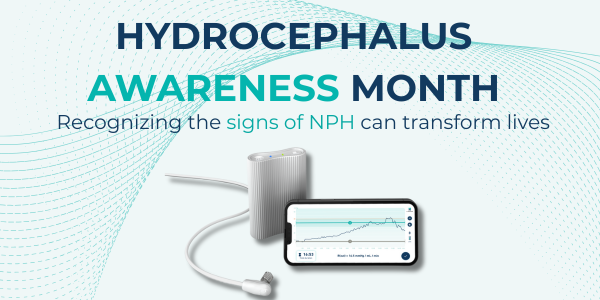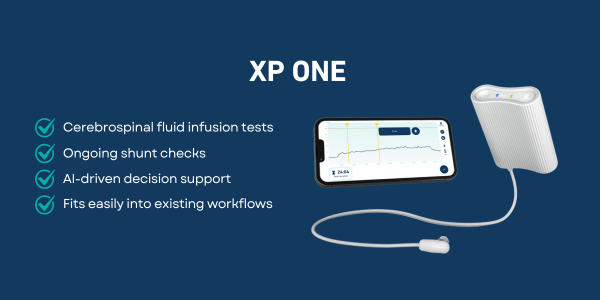
Every September, the global medical community comes together to raise awareness for hydrocephalus, a condition caused by an abnormal buildup of cerebrospinal fluid in the brain.
While often misunderstood and overlooked, a hydrocephalus diagnosis can have a life-changing impact on patients and their families.
Why Awareness Matters
At X-PRESSURE, we’re focused on a condition called Normal Pressure Hydrocephalus, which is commonly misdiagnosed and left untreated. Awareness is about more than just education, it’s about transforming lives through timely diagnosis and treatment.
Normal Pressure Hydrocephalus (NPH) affects an estimated 5% of people 65+ years of age. Its symptoms (gait problems and falls, incontinence and cognitive decline) are often mistaken for Alzheimer’s or Parkinson’s disease. As a result, up to 80% of NPH cases currently go misdiagnosed or undiagnosed, which leaves many patients without the opportunity for effective treatment. This is tragic as, with treatment, the symptoms of NPH are reversible and autonomy can be restored.
By raising awareness, we’re hoping to help healthcare professionals and families recognize the signs of NPH earlier.
The Challenge of Diagnosis
Diagnosing NPH is complex. Brain imaging can reveal enlarged ventricles, but it doesn’t always confirm the condition, and symptom overlap with conditions such as Alzheimer’s can further complicate diagnosis.
Today, one of the most reliable ways to detect NPH is through CSF infusion testing, a diagnostic protocol that evaluates the dynamics of cerebrospinal fluid within the central nervous system. By infusing fluid into the lumbar subarachnoid space and monitoring the resulting pressure changes, clinicians can assess:
- CSF outflow resistance (Rout): Indicates how easily CSF exits the cranial cavity – high resistance is a hallmark of the NPH condition
- Brain elastance: Reflects the brain’s ability to accommodate CSF volume changes without significant pressure increase
- Pulsatility index: Measures the variation in intracranial pressure with each heartbeat
This protocol can also be used to evaluate the performance of a shunt in-vivo, enabling doctors to better regulate shunt performance.
However, access to CSF infusion testing is limited and relegated to specialized care centers, leaving many patients without a clear pathway to diagnosis.
Innovation Is Changing the Future

New solutions like X-PRESSURE’s XP One device will transform how doctors detect NPH and monitor shunt efficacy:
- Cerebrospinal fluid infusion tests will be standardized, more precise, and available to diverse clinicians
- A smart digital platform will provide real-time monitoring during the rapid, outpatient test
- AI-driven support based on anonymized patient data will assist doctors in identifying diagnostic thresholds
- The device will easily integrate into existing clinical workflows, without disruption
By bridging technology and healthcare, innovations like XP One can help reduce misdiagnosis and improve outcomes for NPH patients worldwide.
Why September Matters
Hydrocephalus Awareness Month is more than a campaign, it’s a reminder that early detection changes lives. By spreading knowledge and supporting innovation, we can ensure that more patients get the right diagnosis and treatment sooner – leading to symptom reversal and renewed autonomy.
At X-PRESSURE, we are committed to raising awareness, supporting research, and driving innovation. Join us this September as we highlight the importance of diagnosis and showcase our work at the Hydrocephalus World Congress 2025 in Toulouse from September 5th-8th.
Learn more about NPH, share awareness with your community, and meet us at the Hydrocephalus World Congress to discover how innovation is shaping the future of hydrocephalus detection.
